You know what the real charm of any Ladakh trip is? Sure, the mountains, lakes, and desert landscapes steal the spotlight, but the real soul of Ladakh lies in its monasteries. No Ladakh tour package is truly complete without a monastery or two on your list!
From the picture-perfect Thiksey Monastery that looks like a mini Potala Palace to the grand Hemis Monastery known for its colorful mask dance festival, each one has its own unique vibe. You’ll find ancient art, golden Buddha statues, and soothing chants that make the whole place feel alive. These monasteries also add a peaceful touch to your Ladakh bike tour!
So buckle up (and maybe slow down a little) because ahead, we’re taking you through the best monasteries in Ladakh that’s as soulful as it is scenic. Ready to find your calm in the clouds?
Hemis Gompa, an architectural marvel built in 1620, is one of the must-visit monasteries in Ladakh. It is renowned for its stunning golden statues, stupas adorned with precious stones, and beautiful thangkas brought from Tibet.
At the heart of Hemis Monastery lies a large central courtyard, measuring about 60 meters long and 18 meters wide, with four tall poles displaying colorful banners. During the famous Hemis Festival, this courtyard transforms into a lively stage where monks perform sacred masked dances.
Visitors can also explore the two main temples, Tshogs-khang and Dukhang, which house impressive Buddhist statues, chortens, and ancient religious manuscripts.
One of the biggest attractions of Hemis Monastery is the Hemis Festival, held every June or July to celebrate the birth anniversary of Guru Padmasambhava. The vibrant dances, rituals, and energy of this festival make it an unforgettable experience.
- Timings: 8:00 AM to 1:00 PM and 2:00 PM to 6:00 PM
- Entry Fees: ₹50 per person
top-selling ladakh travel packages:
Thiksey Monastery, a grand and sprawling complex in Ladakh, is a remarkable architectural wonder that rises across 12 levels and has stood strong for over 600 years.
This iconic Leh Ladakh monastery is truly a sight to behold, housing around 100 monks and featuring ten temples and chapels. As you enter the central courtyard, you’ll be greeted by a newly built temple that enshrines a magnificent 15-meter-tall Maitreya Buddha statue, one of the main highlights of Thiksey.
The monastery’s main prayer hall is equally captivating, with shelves lined with ancient books, many of them handwritten or painted. Behind the prayer area stands a large image of Sakyamuni Buddha, flanked by two smaller Bodhisattvas. While climbing the stairs toward the courtyard, visitors can also explore temples dedicated to various guardian deities.
One interesting thing to look out for is the Wheel of Life painting on the far wall, showing the cycle of birth and life in Buddhism. Thiksey Monastery is one of the peaceful and beautiful monasteries In Ladakh that gives visitors a real feel of culture, history, and spiritual life.
- Timings: 6:00 AM to 1:00 PM and 1:30 PM to 6:30 PM
- Entry Fees: ₹50 per person
Diskit Monastery is one of the most famous and must-visit Buddhist monasteries in Ladakh, especially known for its peaceful Morning Prayer ceremony. Located in the scenic Nubra Valley, it’s the oldest and largest monastery in the region. To reach the Gompa, you’ll walk through a path lined with chortens (small Buddhist shrines), adding to the calm mountain vibe.
Inside the main prayer hall, you’ll find beautiful statues, old murals, and ancient relics that reflect Ladakh’s deep spiritual history. Just outside the monastery stands the 32-meter-tall Maitreya Buddha statue, facing the Shyok River. This magnificent statue is one of Diskit’s biggest highlights, symbolizing peace and protection for the valley.
With its stunning views of Nubra Valley and its serene atmosphere, Diskit Monastery is a must-stop on any Ladakh trip, offering both breathtaking scenery and a deep sense of calm.
- Timings: 7:00 AM to 7:00 PM (Morning prayers: 7:00 AM to 8:30 AM)
- Entry Fees: ₹30–₹60 per person
- Camera Fee: ₹50
Alchi Monastery, located in the charming village of Saspol, is one of the most amazing places to visit in Ladakh and a true hidden gem. Dating back to the 11th century, it is one of the oldest monasteries in Ladakh and a beautiful example of early Ladakhi art and architecture.
As you walk towards the Gompa, the first structure you’ll see is the Sum-tsek Temple, the oldest of all, surrounded by finely carved wooden pillars and intricate designs of mythological animals. The monastery complex includes six main buildings, each decorated with detailed murals and paintings that depict Buddhist teachings and stories.
Stepping into Alchi Monastery feels like stepping back in time. Its ancient walls, colorful artwork, and peaceful surroundings give visitors a glimpse into Ladakh’s rich spiritual and artistic past. A visit here is a must for anyone wanting to explore the region’s deep history and timeless Buddhist heritage.
- Timings: 8:00 AM to 1:00 PM and 2:00 PM to 5:00 PM
- Entry Fee: ₹100 per person
- Note: Photography is not allowed inside the prayer halls.
Perched on a hill overlooking the Indus River, Spituk Monastery beautifully blends Ladakhi architecture with centuries of Buddhist heritage. Founded in the 11th century by Od-de, a scholar and translator, it’s one of the ancient monasteries in Ladakh that still carries a sense of timeless devotion.
As you step inside, you’re welcomed by fluttering prayer flags and the soothing scent of incense. The main prayer hall, filled with vibrant murals and sacred thangkas, tells stories of faith and history. Some of the monastery’s statues and scriptures are over 500 years old, making it a treasure for history lovers.
A highlight here is the Gustor Festival, held in the 11th month of the Tibetan calendar. The festival bursts to life with mask dances, rituals, and offerings, giving visitors a glimpse into Ladakh’s living Buddhist traditions. Spituk is also a great starting point for the Markha Valley trek and offers panoramic views of the mountains.
- Timings: 6:00 AM to 1:00 PM and 1:30 PM to 6:00 PM
- Entry Fee: ₹30 per person
Known as the “Moonland Monastery,” Lamayuru Monastery is one of the oldest and most remarkable ancient monasteries in Ladakh. Founded in the 11th century, it sits on a hilltop overlooking the surreal, moon-like landscapes of Lamayuru village. The monastery’s whitewashed buildings, fluttering prayer flags, and dramatic setting make it one of the most photogenic spiritual sites in Ladakh.
Inside, you’ll find beautifully painted frescoes, intricate sculptures, and ancient scriptures, some believed to be among the oldest in the region. The temple dedicated to Avalokiteshwara, the Bodhisattva of Compassion, features a striking 11-headed statue that captivates every visitor.
For those looking to dive deeper into monastic life, Lamayuru offers simple guest accommodations and the chance to join the monks in prayer. If you visit in July, don’t miss the Yuru Kabgyat Festival, a vibrant celebration of music, masks, and rituals that reflect the spirit of Buddhism in Ladakh.
Lamayuru isn’t just a spiritual destination, it’s a living piece of history and one of the top monasteries in Leh Ladakh you simply can’t skip.
- Timings: 8:00 AM to 5:00 PM
- Entry Fee: ₹50 per person
Located amidst quiet hills and open valleys, Likir Monastery is one of the best monasteries to visit in Ladakh. Built in the 11th century, it’s known for its peaceful atmosphere and the towering 23-meter-tall statue of Maitreya Buddha that dominates the skyline. Inside, the monastery’s main prayer hall is decorated with colorful murals and ancient relics that showcase Ladakh’s deep-rooted spirituality.
Legend says the monastery was built where two serpents appeared from the ground — a divine sign that made the spot sacred. Today, it continues to be a serene retreat for monks and travelers alike. The calm environment, soothing chants, and scenic mountain views make Likir a wonderful stop for anyone seeking reflection, meditation, or simply a quiet break on a solo trip to Ladakh.
- Timings: 8:00 AM to 5:00 PM
- Entry Fee: Free
- Museum Fee: ₹20
Located about 15 km from Leh, Phyang Monastery is one of the most famous monasteries of Ladakh to explore. Built in the 16th century, it’s known for its massive collection of ancient Buddhist relics, colorful murals, and beautifully preserved thangkas.
This Leh Ladakh monastery belongs to the Drikung Kagyu sect and is often compared to a mini-fortress because of its grand structure perched on a hilltop. Inside, the monastery has several shrines, statues, and old manuscripts that give a glimpse into Ladakh’s rich monastic heritage. The annual Phyang Tsedup Festival, celebrated with masked dances and rituals, is one of the most lively cultural events in the region.
Surrounded by rugged mountains and vast landscapes, Phyang is not just a spiritual retreat but also a great photography spot. Whether you’re on a cultural trail or a road trip, this Leh Ladakh monastery is definitely worth a stop.
- Timings: 8:00 AM to 5:00 PM
- Entry Fee: Free
Perched on a hill shaped like a tiger’s nose, Stakna Monastery offers one of the most stunning views of the Indus Valley. The name “Stakna” literally means “Tiger’s Nose,” and the location perfectly lives up to it — peaceful, and picture-perfect. Founded in the late 16th century by a Bhutanese saint, this monastery belongs to the Drukpa sect of Buddhism.
Inside the monastery, you’ll find beautifully decorated prayer halls with thangkas, old paintings, and a huge statue of Arya Avalokitesvara (the Compassionate One).
Stakna might not be as large as some of the other gompas in Ladakh, but its charm lies in its simplicity and views.
- Timings: 8:00 AM to 1:00 PM
- Entry Fee: Free (donations appreciated)
Shey Gompa and Palace, located in the heart of Ladakh, is one of the most interesting monasteries in Leh Ladakh to visit. As you drive through the winding mountain roads leading up to this hilltop site, you get a quiet sense of Ladakh’s royal past and cultural richness.
At the center of the monastery stands a beautiful three-story statue of Buddha Shakyamuni, made of copper gilt. It’s the only one of its kind in the region and a fine example of Ladakhi craftsmanship. The detailed work and peaceful setting make it a real highlight for visitors.
Around the palace, you’ll find hundreds of chortens (stupas) and the Dresthang Gompa, built during the reign of King Singay Namgyal. This smaller monastery also houses a similar three-story Buddha statue and adds to the calm atmosphere of the place.
With rocky hills, open views, and a sense of quiet all around, Shey is a lovely stop for anyone interested in history, photography, or local culture. If you visit during the Shey Srubla Festival, you’ll also get to see traditional dances, music, and rituals that celebrate Ladakh’s vibrant heritage.
- Timings: 8:00 AM to 6:00 PM
- Entry Fee: ₹20 per person
Perched on a hill overlooking the Indus Valley, Matho Monastery is one of the most vibrant Buddhist monasteries in Ladakh. Founded in the 16th century, it belongs to the Sakya sect and is known for its colourful festivals and unique spiritual traditions.
The highlight here is the Matho Nagrang Festival, where oracles (monks believed to be possessed by spirits) make predictions for the coming year, a fascinating experience for visitors.
Inside, this Ladakh monastery houses ancient thangkas, murals, and a museum displaying rare artifacts and old Buddhist texts. The view from the top is stunning, especially at sunrise when the golden light hits the mountains.
- Timings: 6:00 AM to 6:00 PM
- Entry Fee: ₹30 per person
Chemrey Monastery, located about 40 km from Leh, is one of the most picturesque gompas in Ladakh. Built in the 17th century, this stunning whitewashed structure sits peacefully on a hill surrounded by golden fields. It’s home to around 20 monks and features beautiful paintings, scriptures, and a huge statue of Padmasambhava (Guru Rinpoche).
The monastery’s calm vibe and dramatic backdrop make it a favorite among photographers and travelers seeking peace. During the annual Chemrey Angchok Festival, the courtyard comes alive with traditional mask dances and rituals, a perfect mix of culture and devotion.
Unlike most other monasteries, Takthok Monastery is carved entirely out of rock — which is what makes it truly unique Leh Ladakh monastery. Located near Sakti village, about 46 km from Leh, its name literally means “Rock Roof.” The monastery is built around a cave where Guru Padmasambhava is said to have meditated in the 8th century.
Inside, the dark, cool interiors and faint smell of butter lamps create a mystical atmosphere. Ancient murals and rock carvings add to its charm, while the annual Takthok Festival brings life and color to the peaceful surroundings.
If you’re looking to visit something different from the usual Buddhist monasteries in Ladakh, Takthok is a must-see — a perfect mix of history, spirituality, and natural wonder.
- Timings: 6:00 AM to 6:00 PM
- Entry Fee: Free (donations welcome)
Tucked away about 70 km from Leh, Rizong Monastery is one of those peaceful places that feel far removed from the rest of the world. Founded in 1831, it’s often called the “Paradise for Meditation”, and honestly, the name fits perfectly. Surrounded by rocky cliffs and quiet valleys, it’s home to monks who follow a very simple and disciplined lifestyle.
There’s also a small nunnery nearby where nuns help with the monastery’s daily prayers and rituals. If you’re someone who enjoys calm places and wants to experience true monastic life, Rizong is a must-visit among the famous monasteries of Ladakh.
- Timings: 9:00 AM to 5:00 PM
Just a short 15 km drive from Leh, Stok Monastery is a beautiful mix of spirituality, history, and stunning views. It was built in the 14th century and belongs to the Gelugpa sect of Buddhism. The monastery has a huge 71-foot Buddha statue that overlooks the valley. It's absolutely breathtaking, especially at sunset.
Inside, you’ll find colorful thangkas, old scriptures, and peaceful prayer halls. Every year, the Stok Guru Tsechu Festival adds life to the place with dances, rituals, and lots of local energy. Small, calm, and full of charm, Stok is one Ladakh monastery you shouldn’t skip.
- Timings: 6:00 AM to 1:00 PM and 1:30 PM to 6:00 PM
- Entry Fee: ₹30 per person (for Indians)
If you’re in Leh and want a quiet place to unwind, Sankar Monastery is perfect. It’s just 3 km from the main town, so you can easily visit it in the evening when it’s beautifully lit up. This small monastery is known for its peaceful vibe, colorful murals, and a stunning statue of Avalokitesvara, the compassionate Buddha with 1,000 arms and 11 heads.
Since it’s not as crowded as some other spots, you can really take your time soaking in the calm. It’s one of those monasteries that remind you why Ladakh feels so special — peaceful, spiritual, and simply beautiful.
- Timings: 8:00 AM to 5:00 PM
- Entry Fee: Free
Mulbekh Monastery is one of those places that instantly makes you stop and stare. Located about 45 km from Kargil, this ancient gompa in Ladakh sits high on a rocky hill and is famous for its massive 30-foot statue of Maitreya Buddha carved right into the cliffside.
You can actually spot the statue from the main Srinagar-Leh highway! The monastery has two main gompas belonging to different Buddhist sects, both filled with old paintings, relics, and a peaceful vibe. Visiting Mulbekh feels like stepping into a living piece of Ladakh’s spiritual history — quiet, powerful, and incredibly scenic.
- Timings: 7:30 AM to 9:30 PM
- Entry Fee: ₹30 per person
Basgo Monastery, another of the famous monasteries of Ladakh, stands proudly on a rugged hill overlooking the ruins of Basgo village. Once an important cultural and political center, the monastery was built for the Namgyal rulers in the 17th century. Inside, you’ll find stunning murals, colorful frescoes, and three temples, all dedicated to Maitreya Buddha.
The intricate artwork and the view of the valley below make Basgo one of the best monasteries to visit in Ladakh, especially if you love places that blend beauty, history, and spirituality.
- Timings: 9:00 AM to 6:00 PM (approx.)
- Entry Fee: Free
Hidden away near Lamayuru, Wanla Monastery is smaller than most gompas in Ladakh but equally captivating. It’s perched above a sleepy little village and is known for its 11-headed Avalokitesvara statue.
The structure dates back to the 13th century, and the old walls, woodwork, and paintings have somehow survived the test of time. It’s usually quiet here, which makes it perfect if you’re looking to experience Ladakh’s peaceful monastic life without crowds.
Phugtal Monastery is one of the most remote and fascinating gompas in Ladakh, hidden deep within the Zanskar Valley. Built in the 12th century, it is uniquely constructed around a natural limestone cave on a cliffside, resembling a beehive when seen from afar. The monastery was founded by Lama Gangsem Sherap Sampo and still houses over 70 monks who follow ancient Buddhist traditions.
The cave has been a place of meditation for centuries, believed to have been visited by several scholars and saints. What makes Phugtal truly special is its isolation, it’s accessible only on foot, requiring a scenic trek through rugged terrain along the Tsarap River. Inside, you’ll find ancient frescoes, sacred scriptures, and a natural spring believed to have healing properties.
- Timings: 6:00 AM to 1:00 PM and 1:30 PM to 6:00 PM
- Entry Fees: Free
Honestly, exploring the monasteries in Ladakh is one of the most memorable parts of any trip here. From the grandeur of Hemis and Thiksey, to the peaceful vibes of Diskit, Likir, and Shey, each monastery has its own story to tell. Add in the historic charm of Lamayuru, Phyang, Stakna, Sankar, and the quiet beauty of Matho, Chemrey, Takthok, Rizong, Stok, and the hidden gems like Mulbekh, Basgo, Wanla, and Sumda Chun, and you get a mix of culture, spirituality, and jaw-dropping scenery that’s truly unique to Ladakh.
These monasteries in Ladakh aren’t just religious sites — they’re living museums, filled with ancient murals, statues, and centuries of Buddhist tradition. Whether you’re a history buff, a spiritual traveller, or just someone who loves breathtaking landscapes, visiting these monasteries is a must on any Ladakh trip.





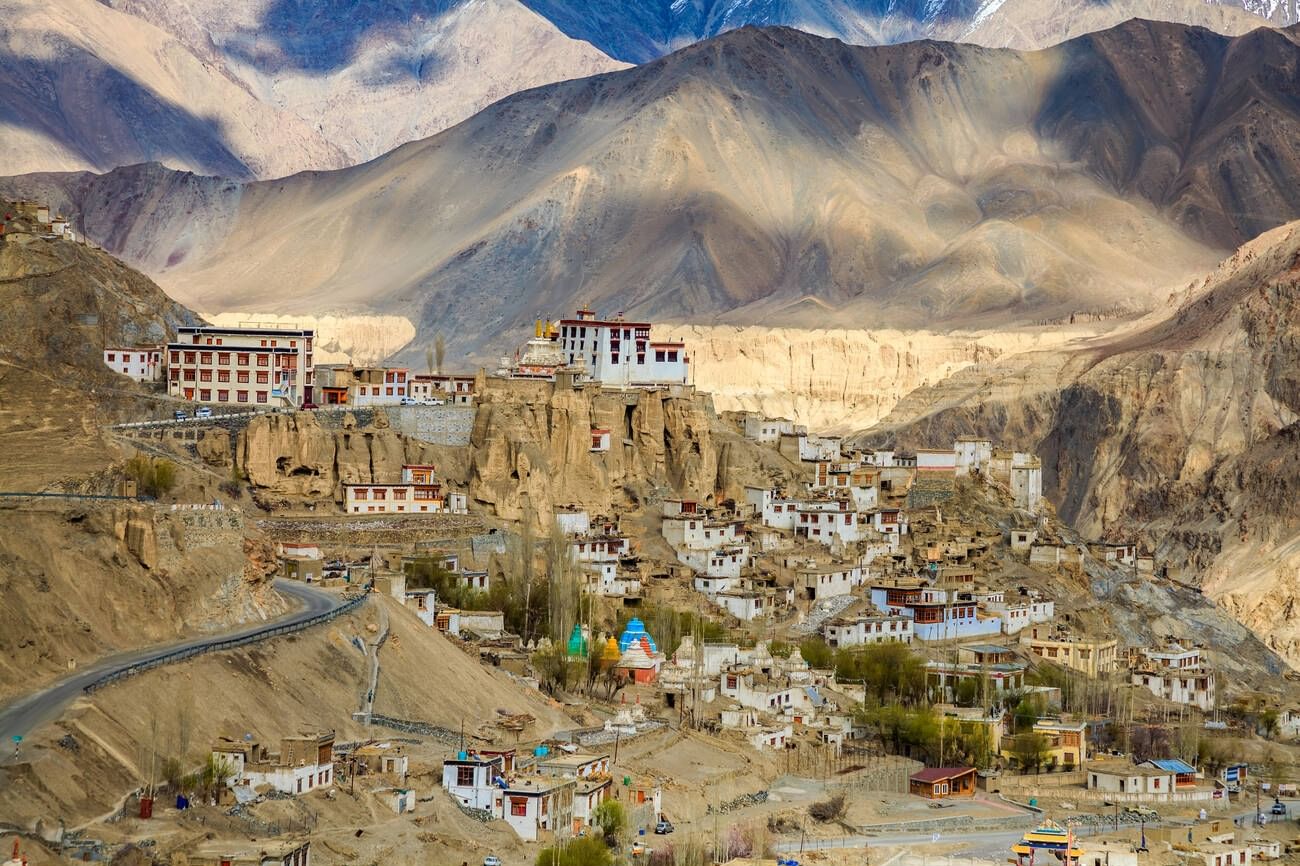
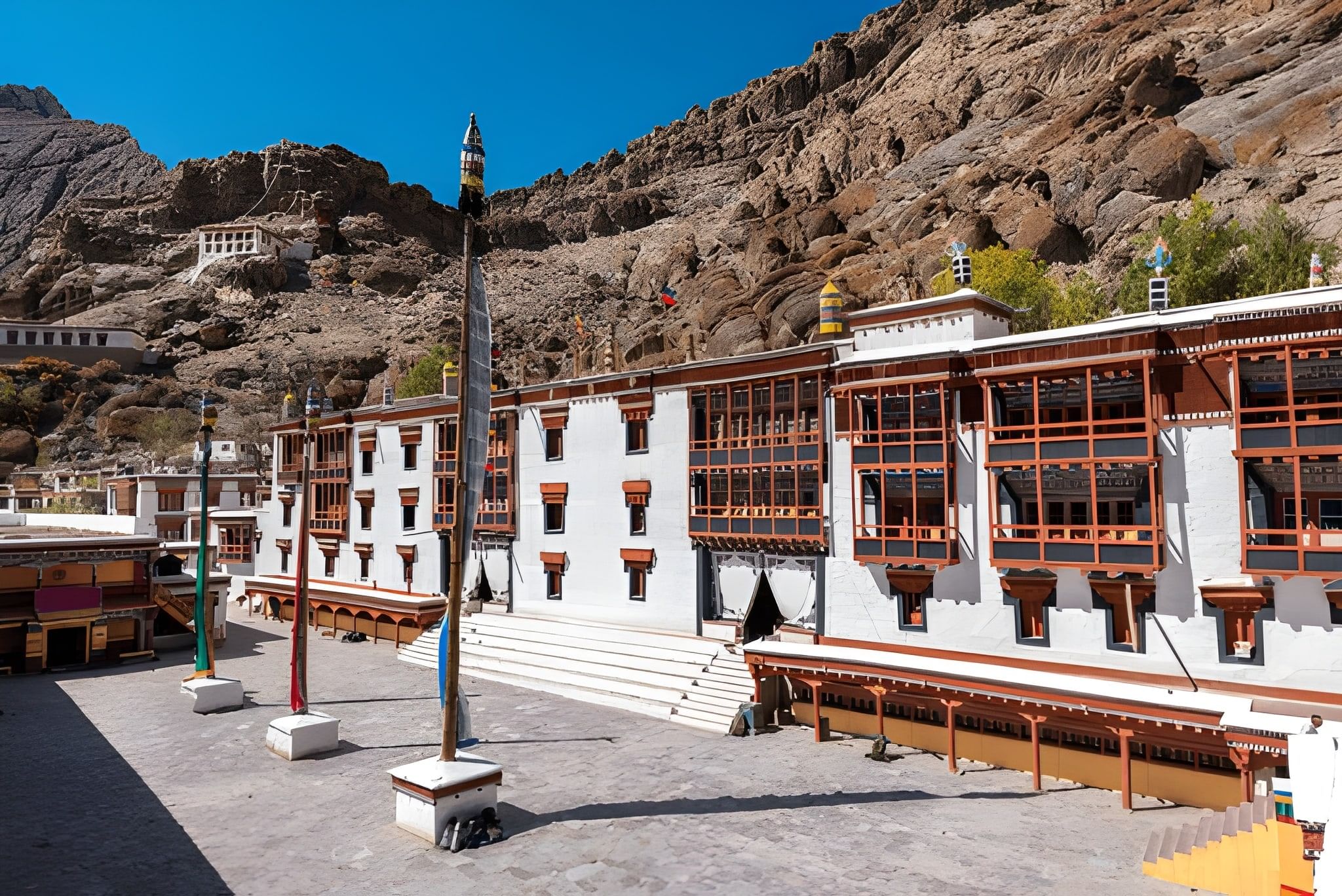
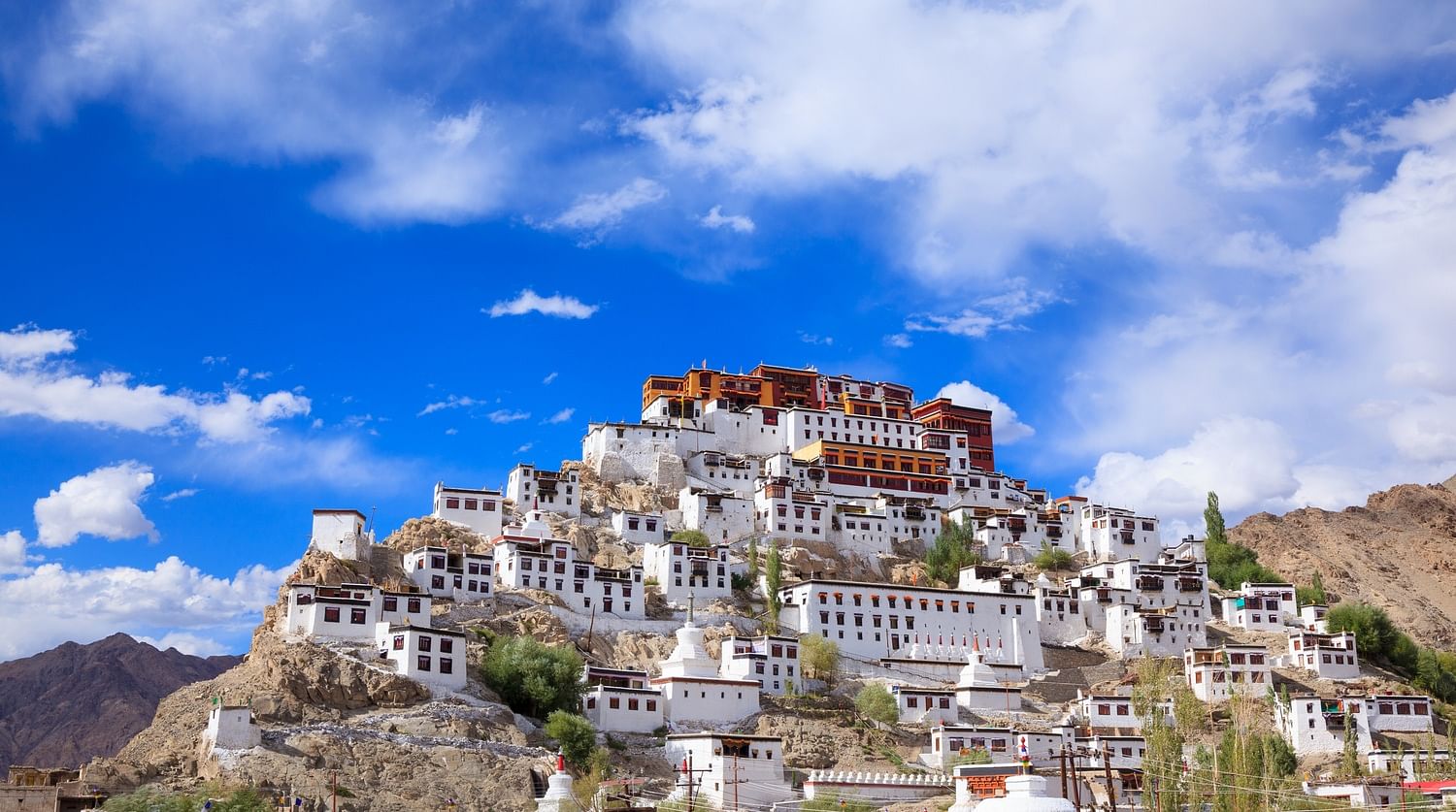
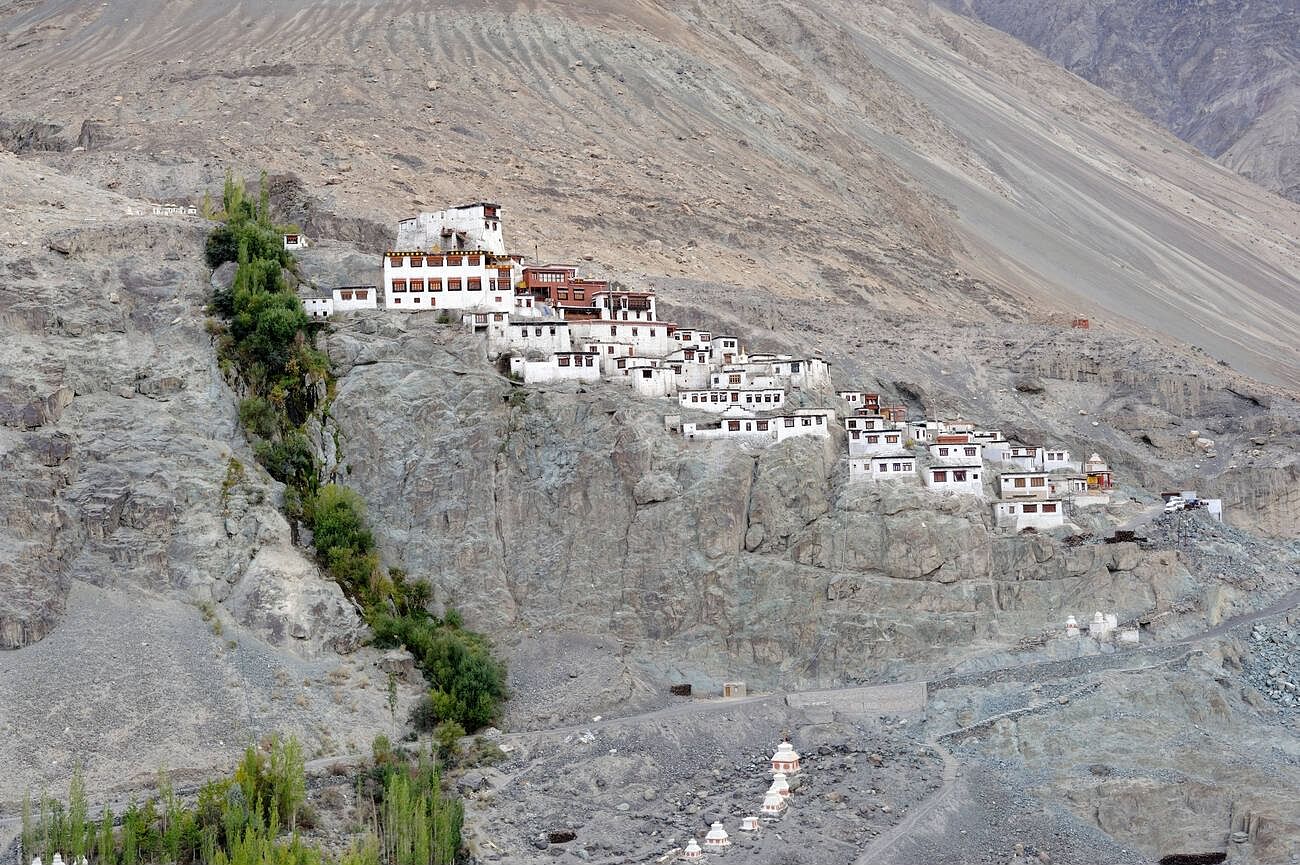
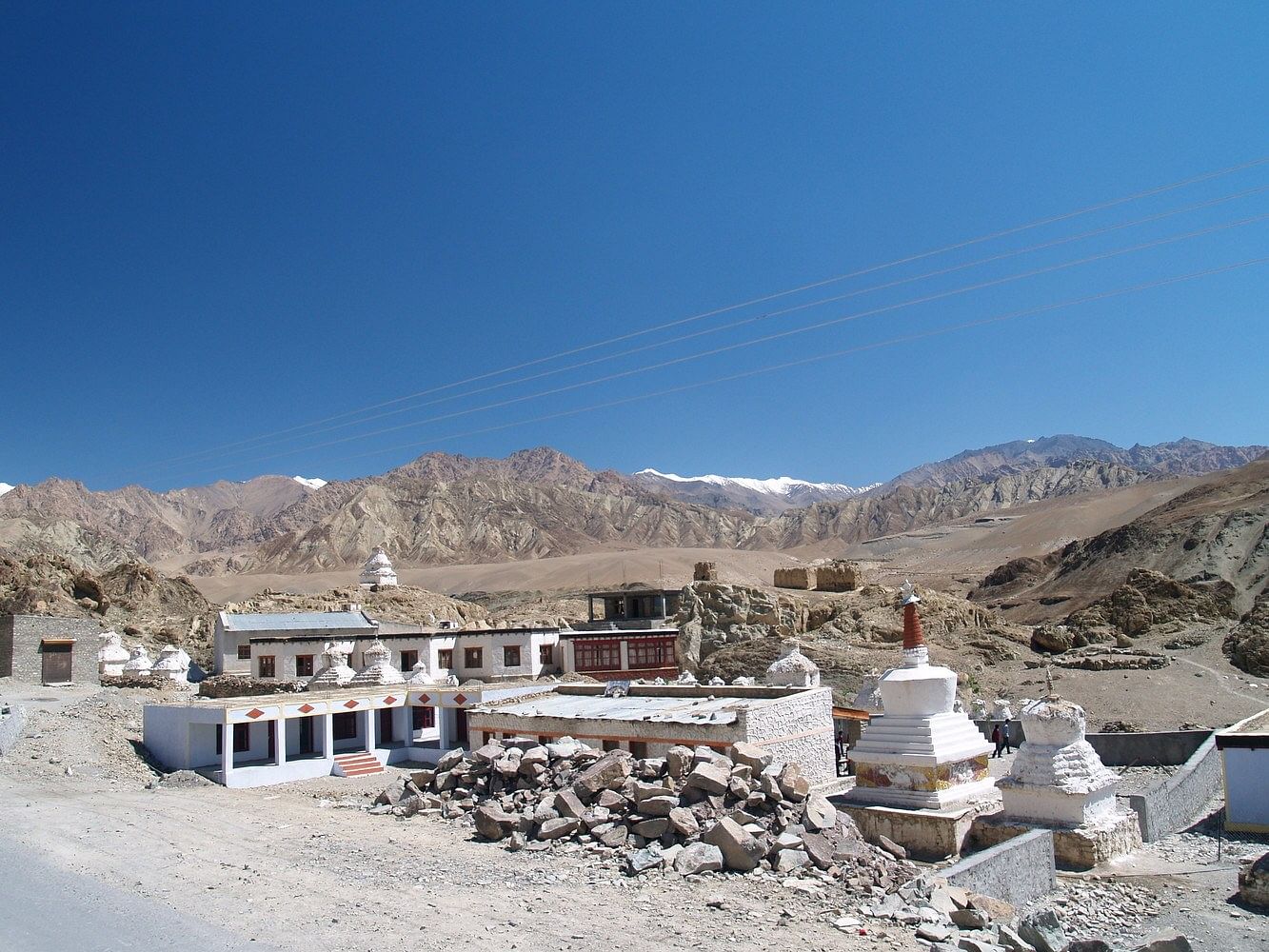
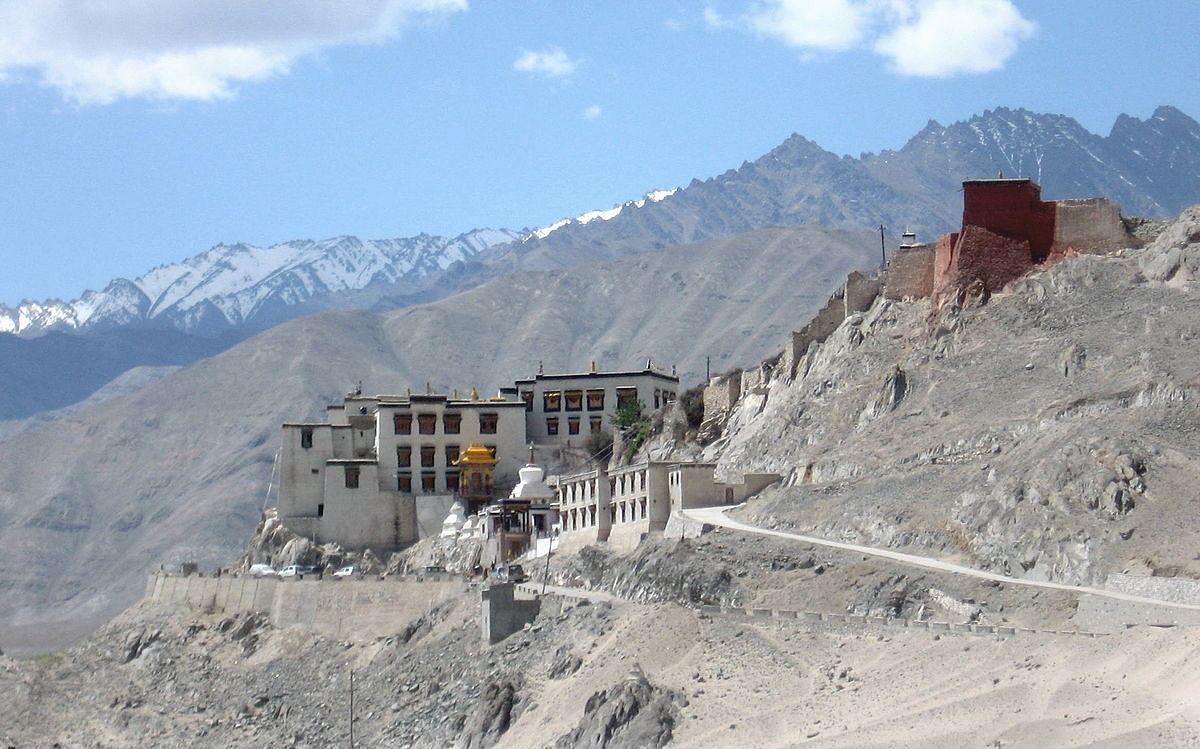
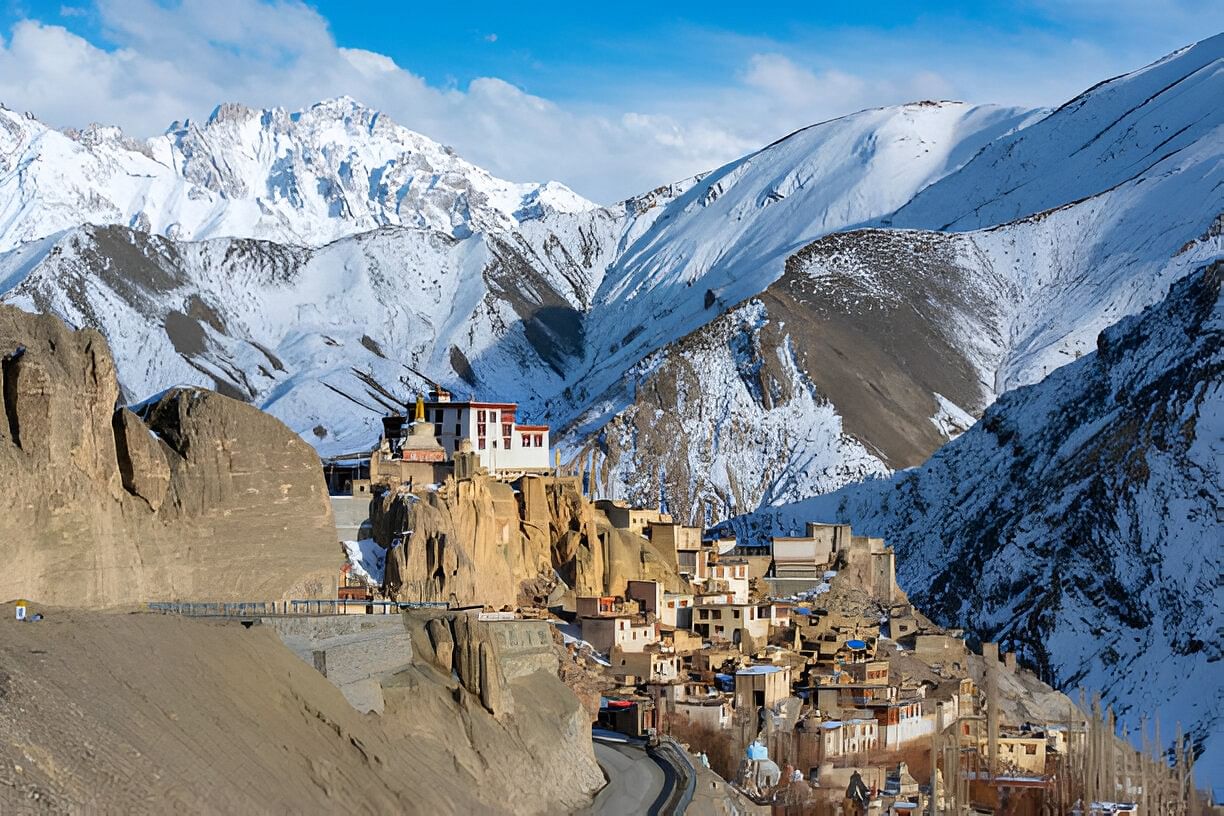
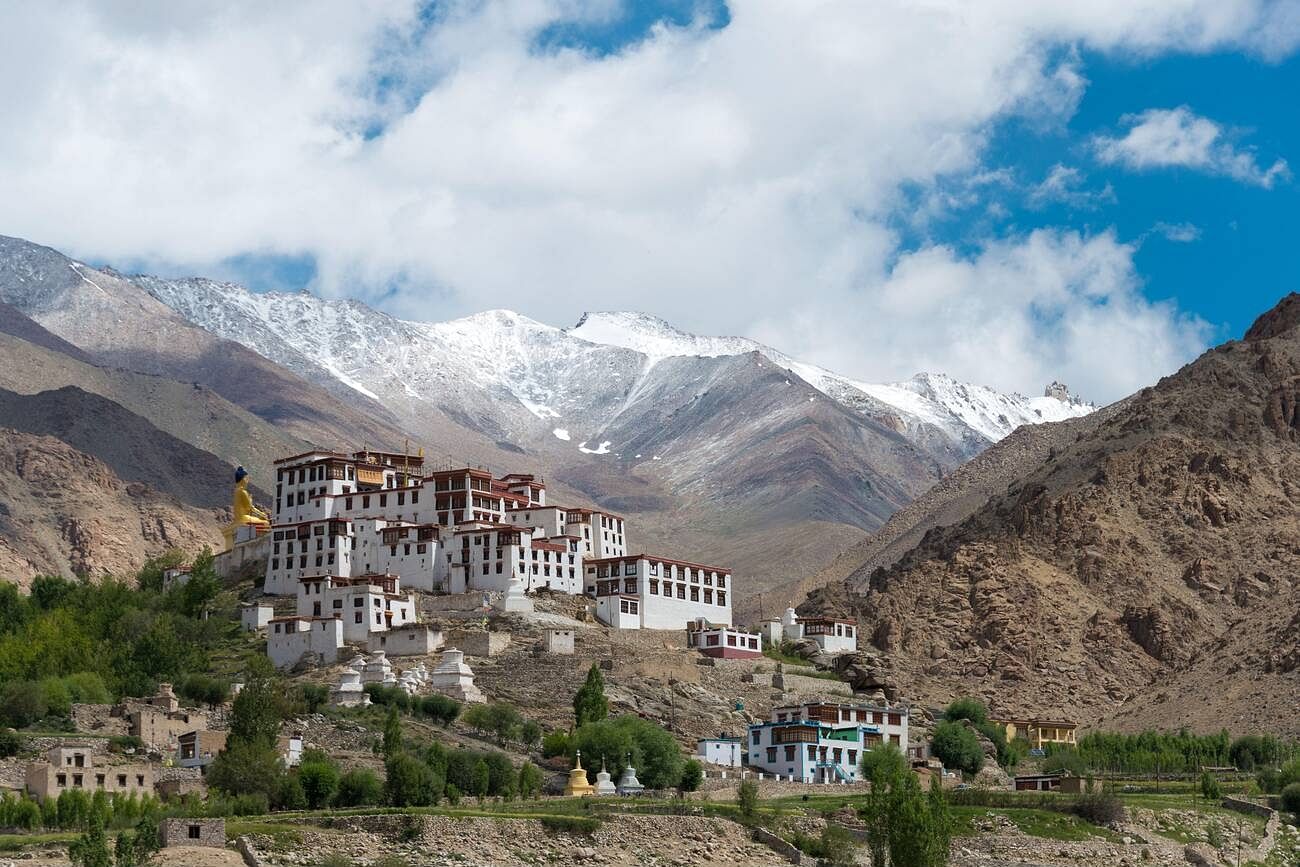
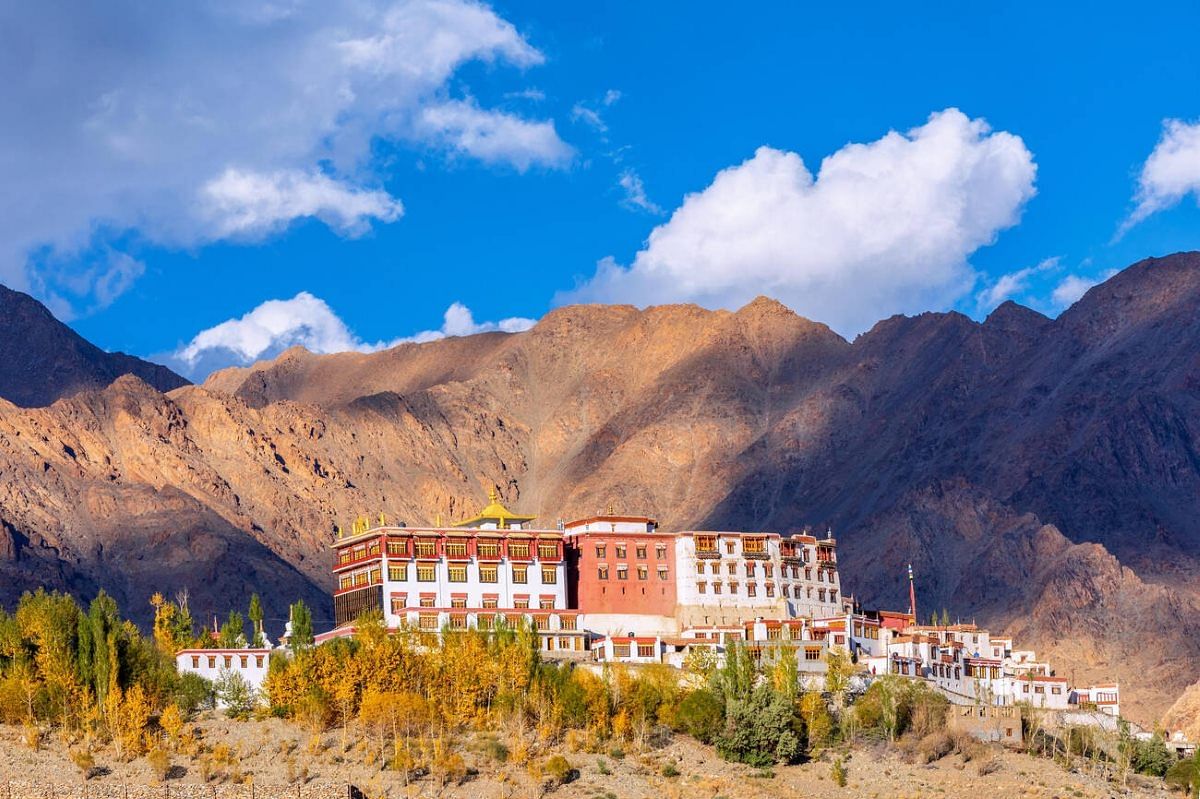
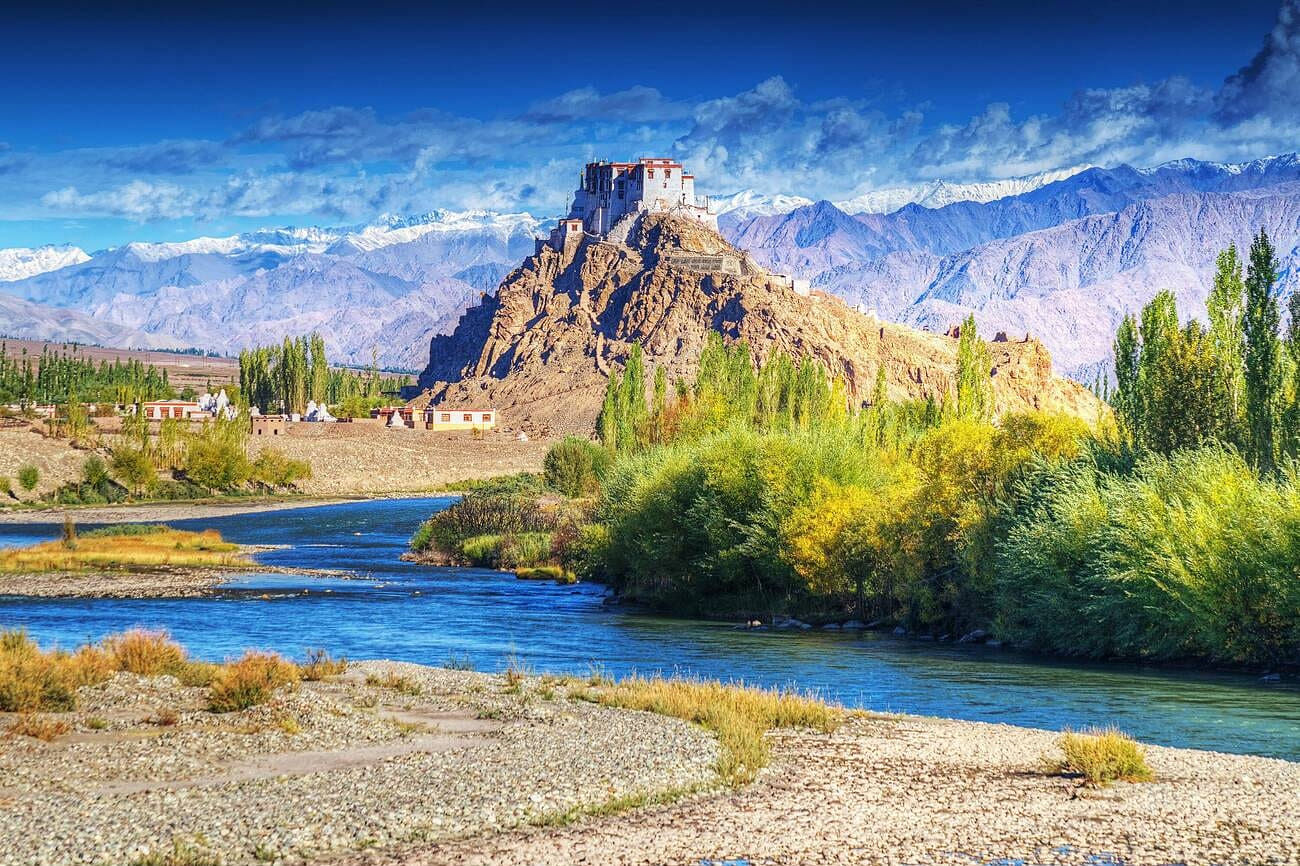
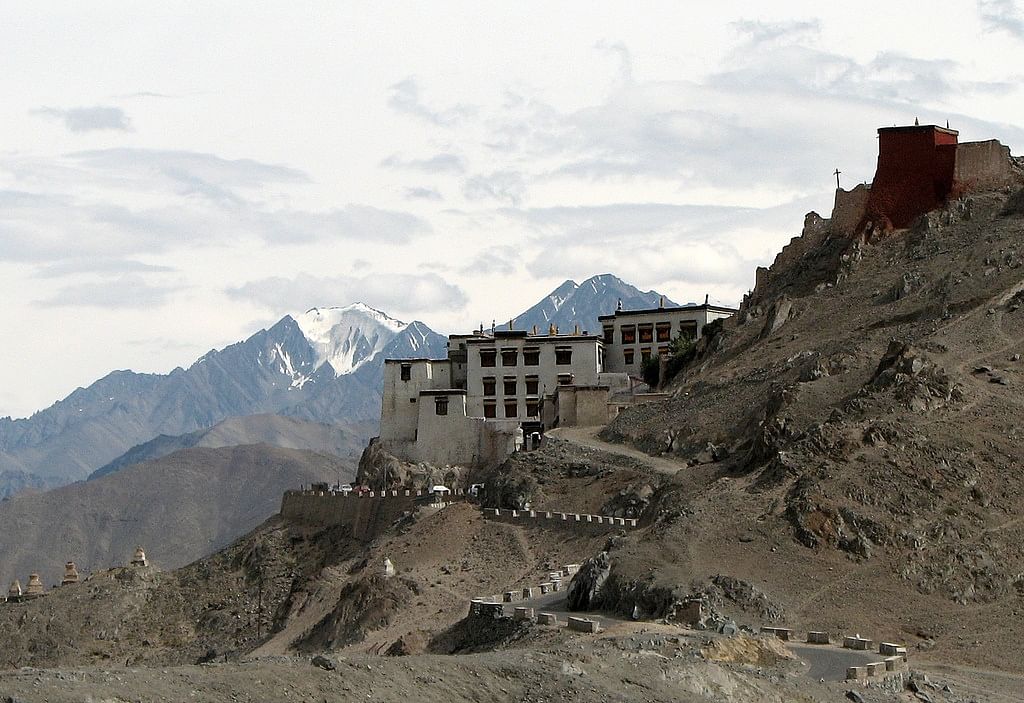
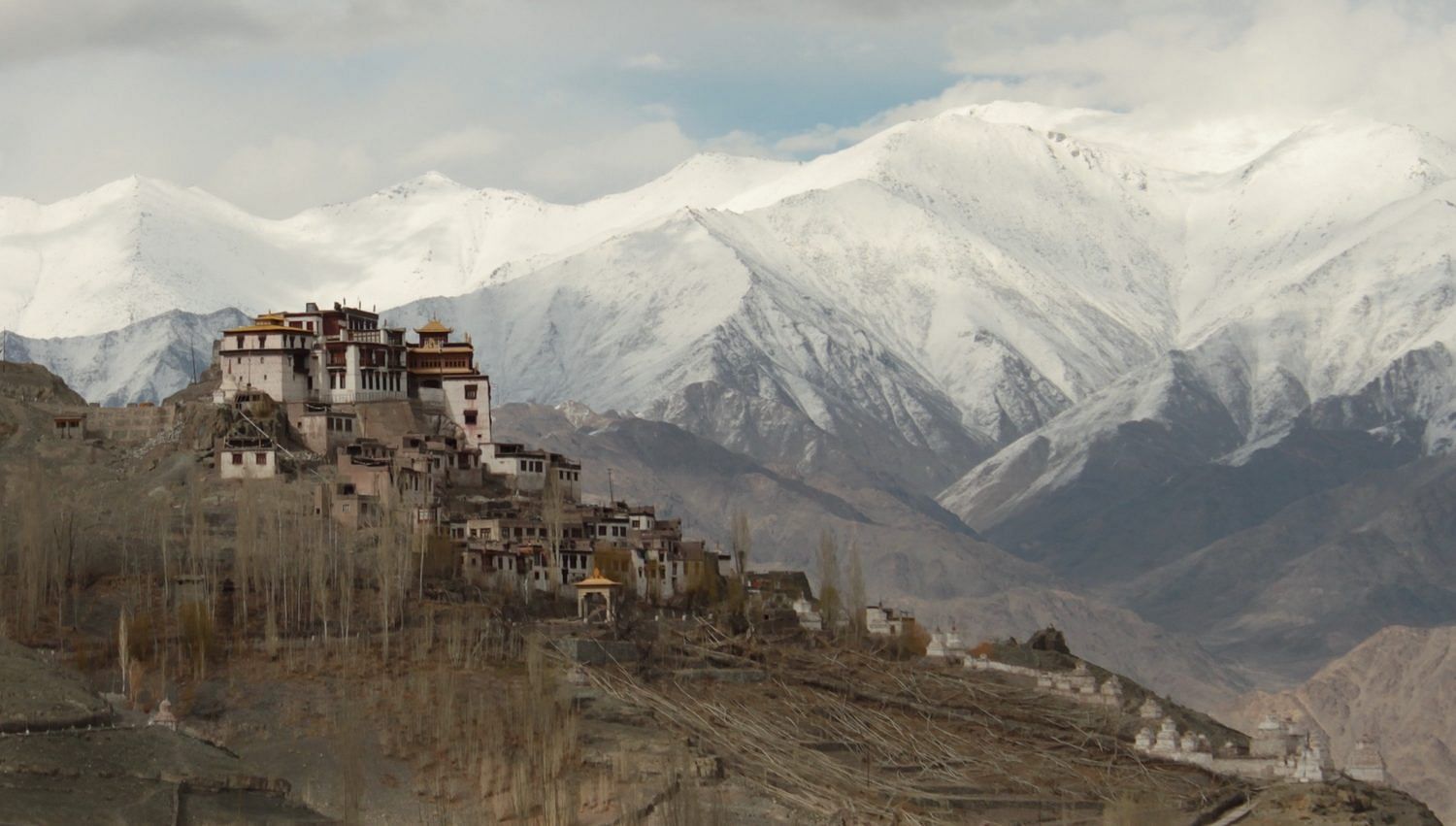
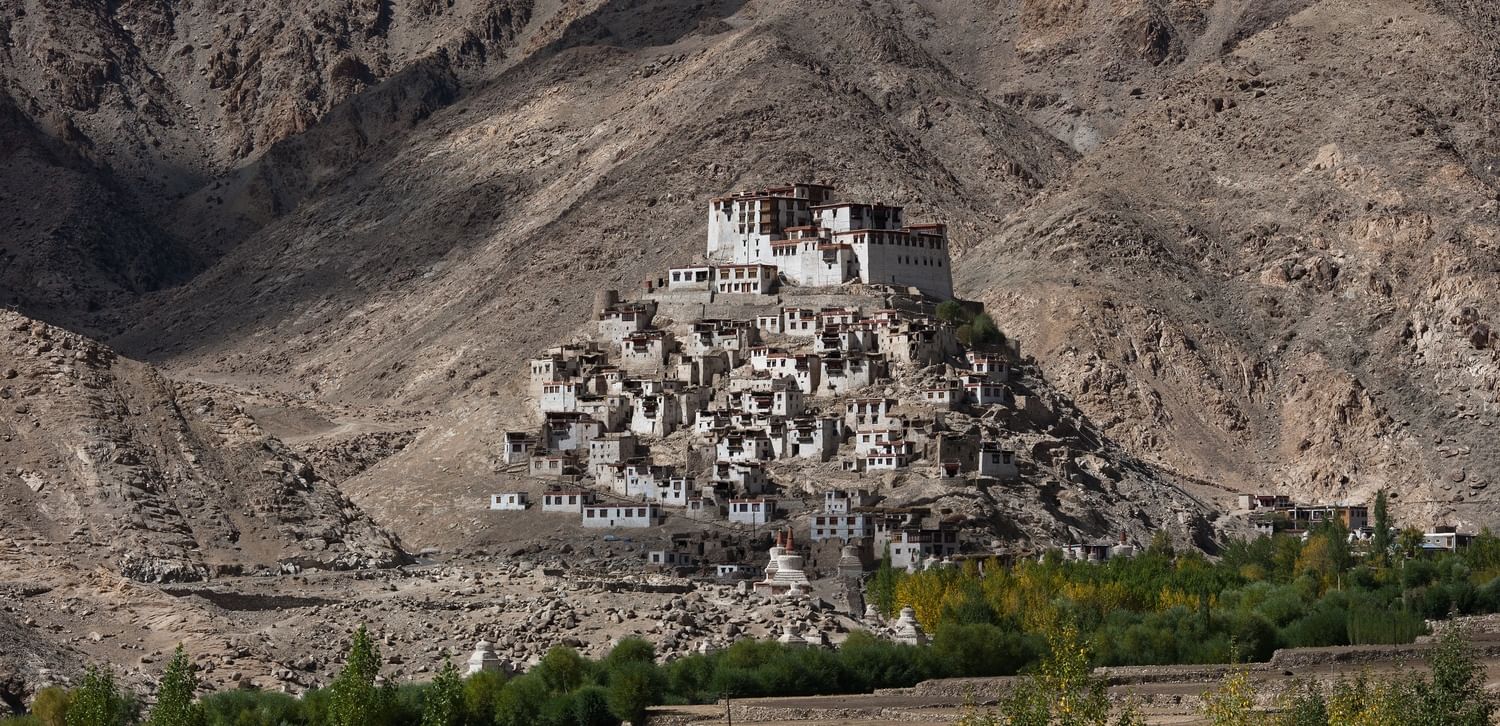
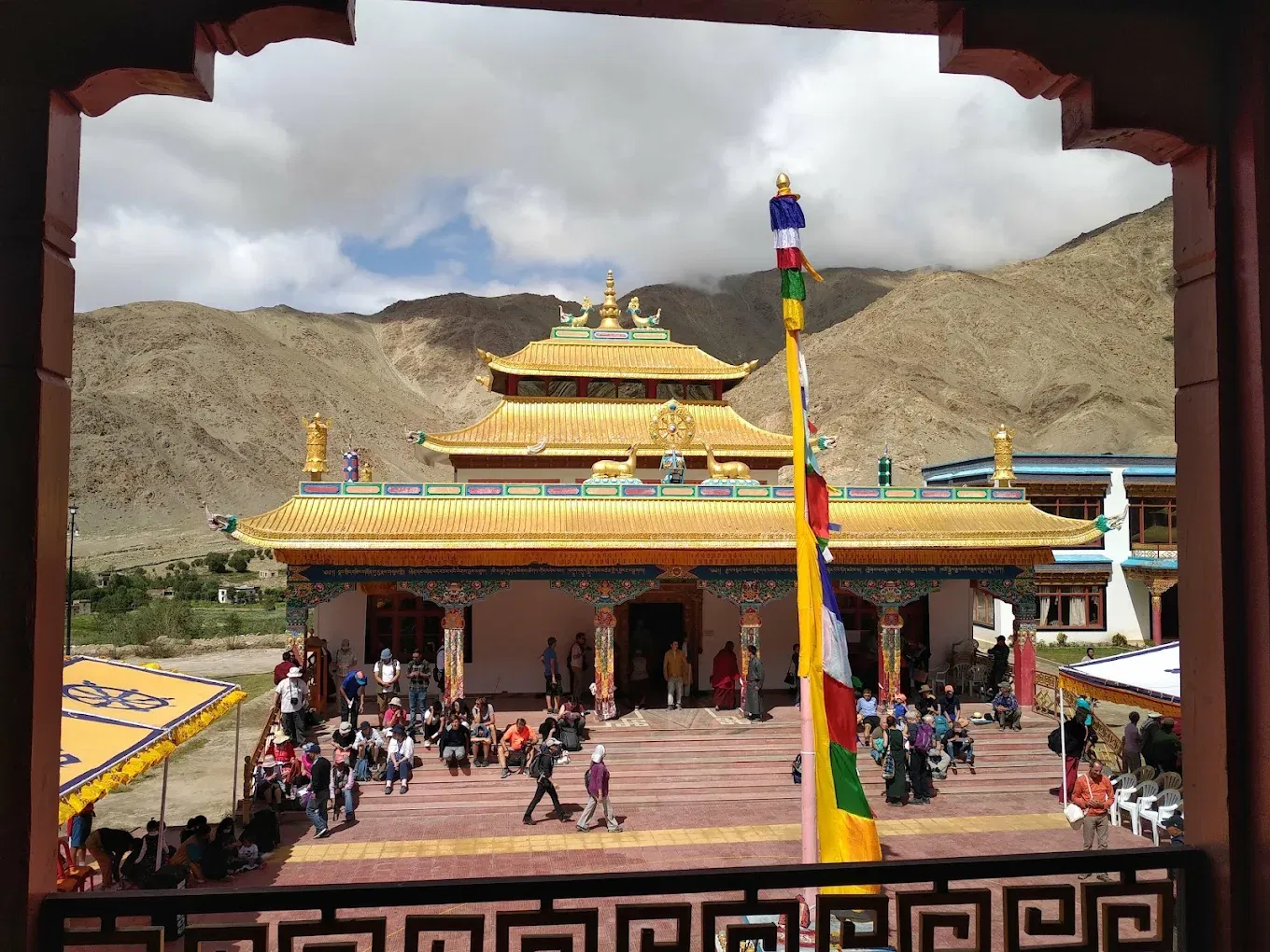
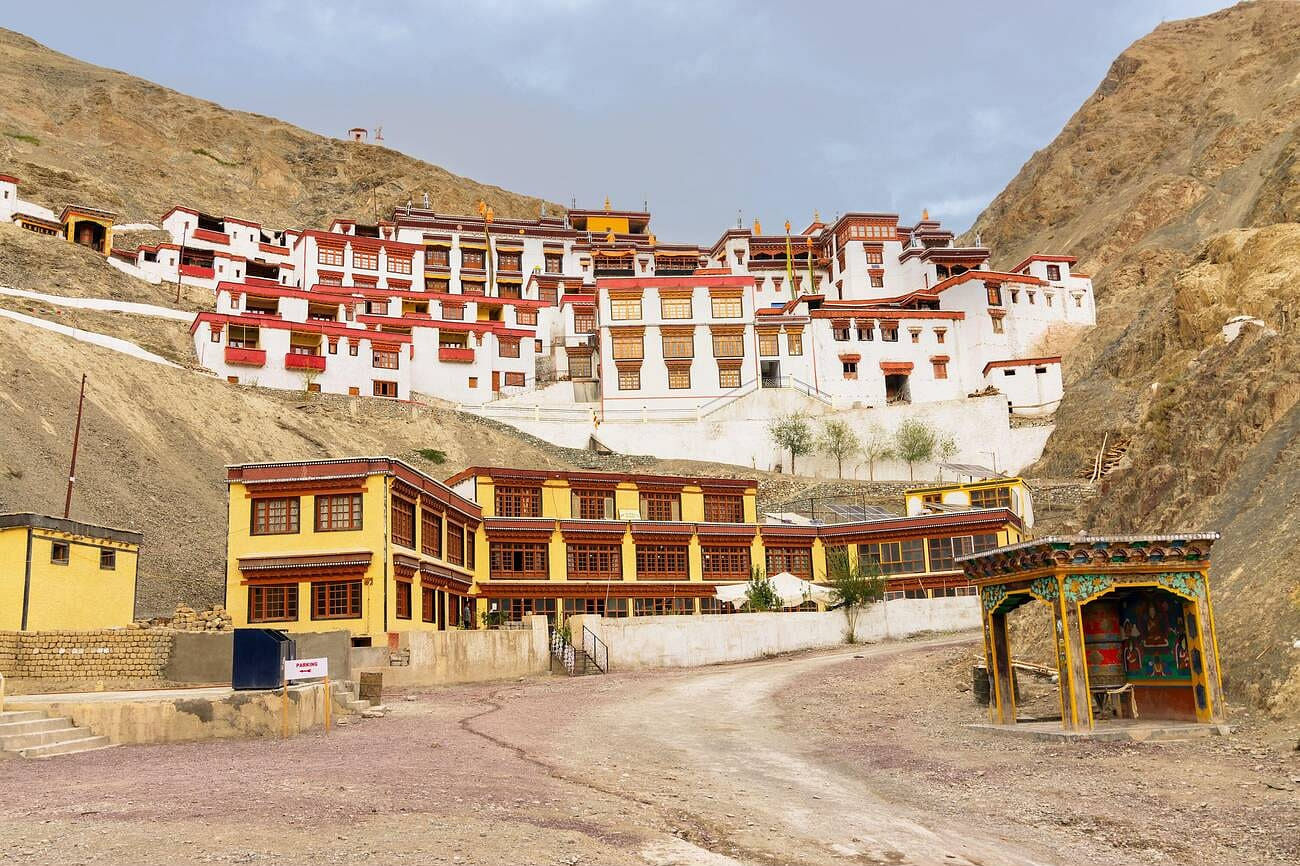
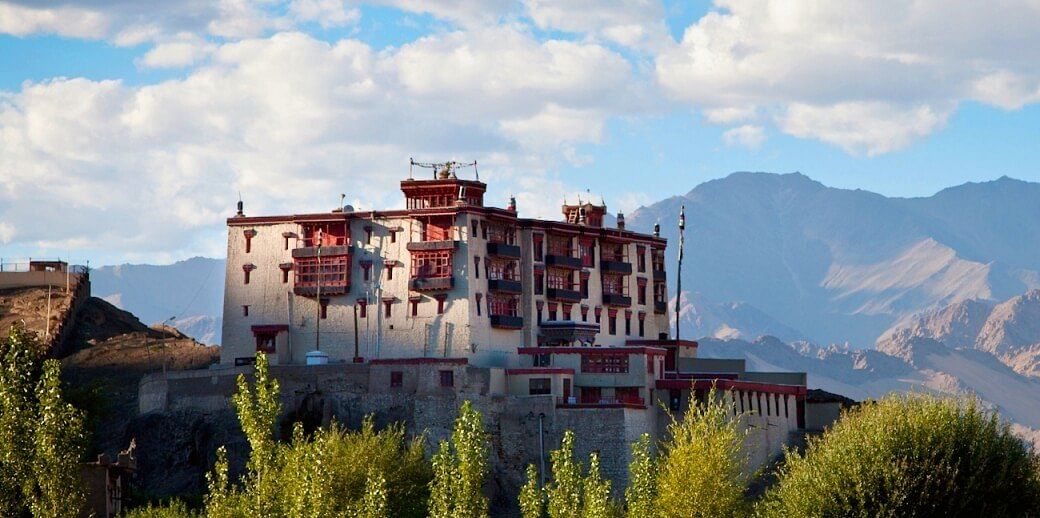
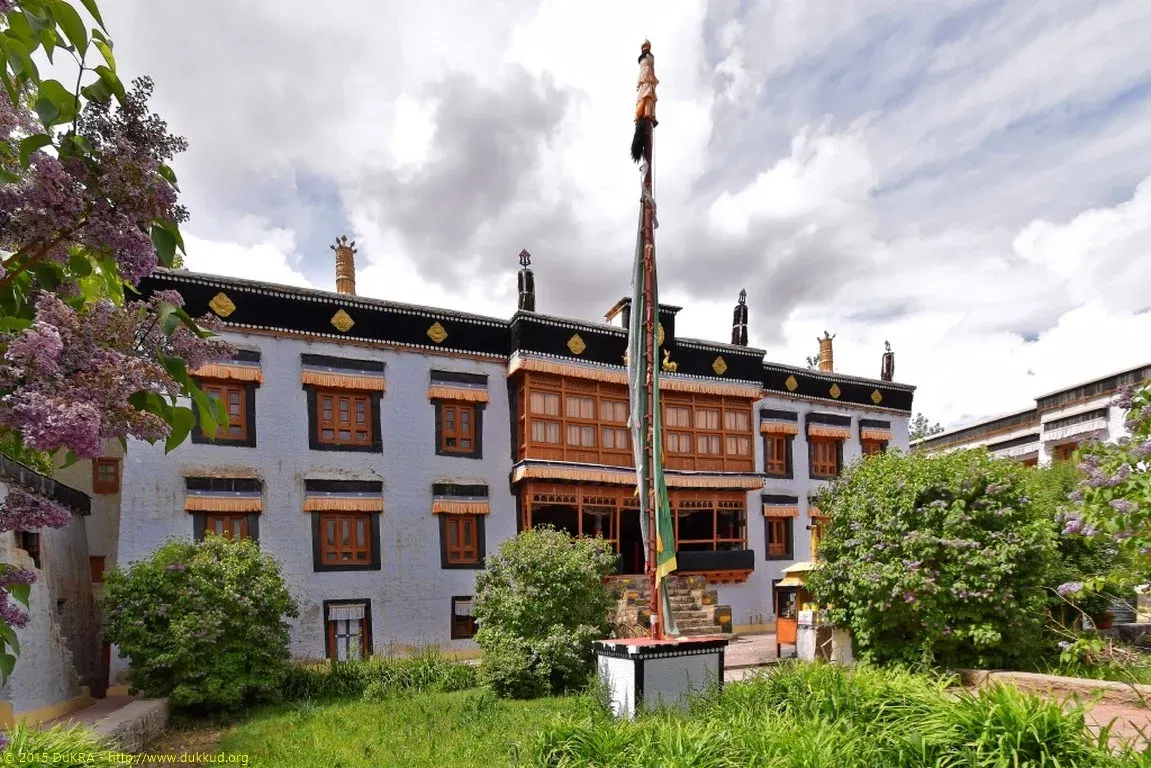
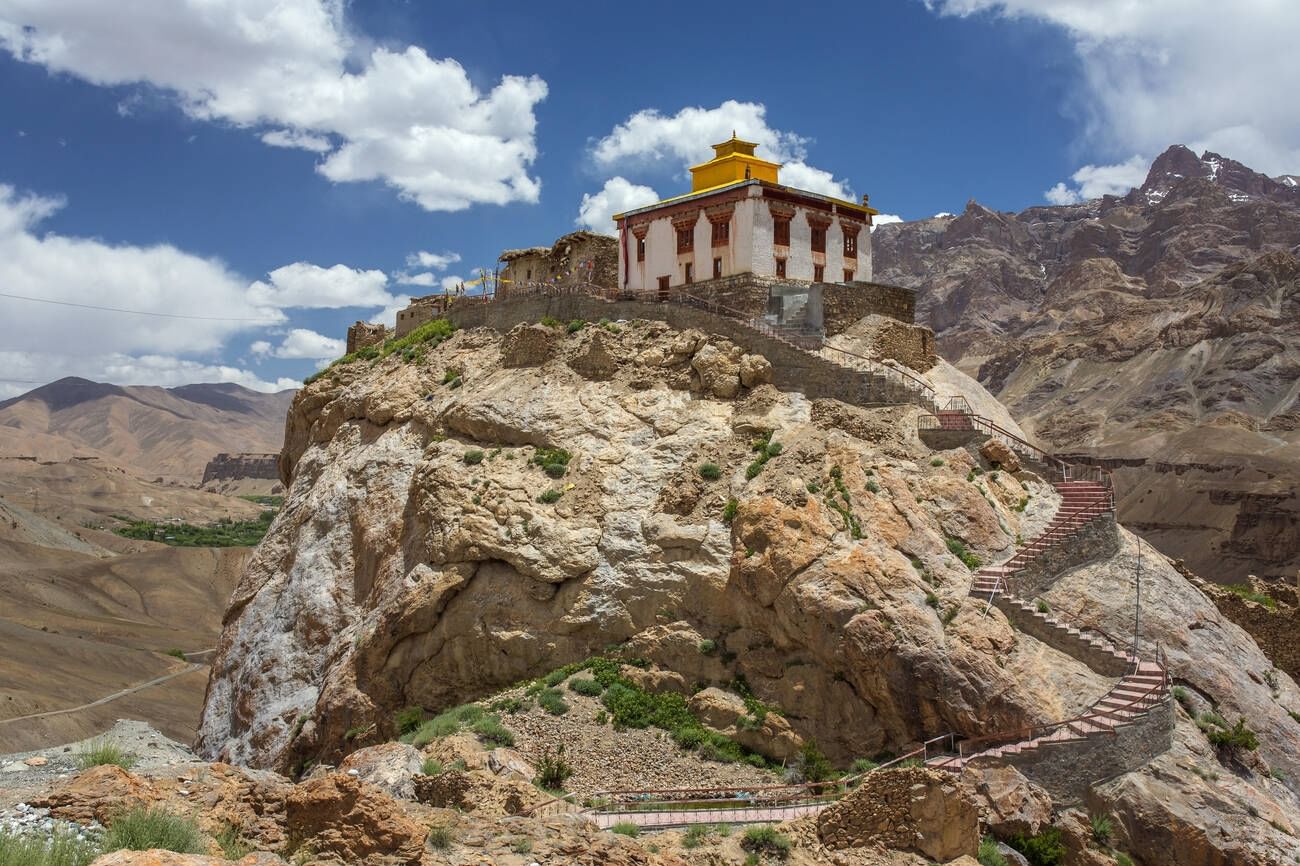
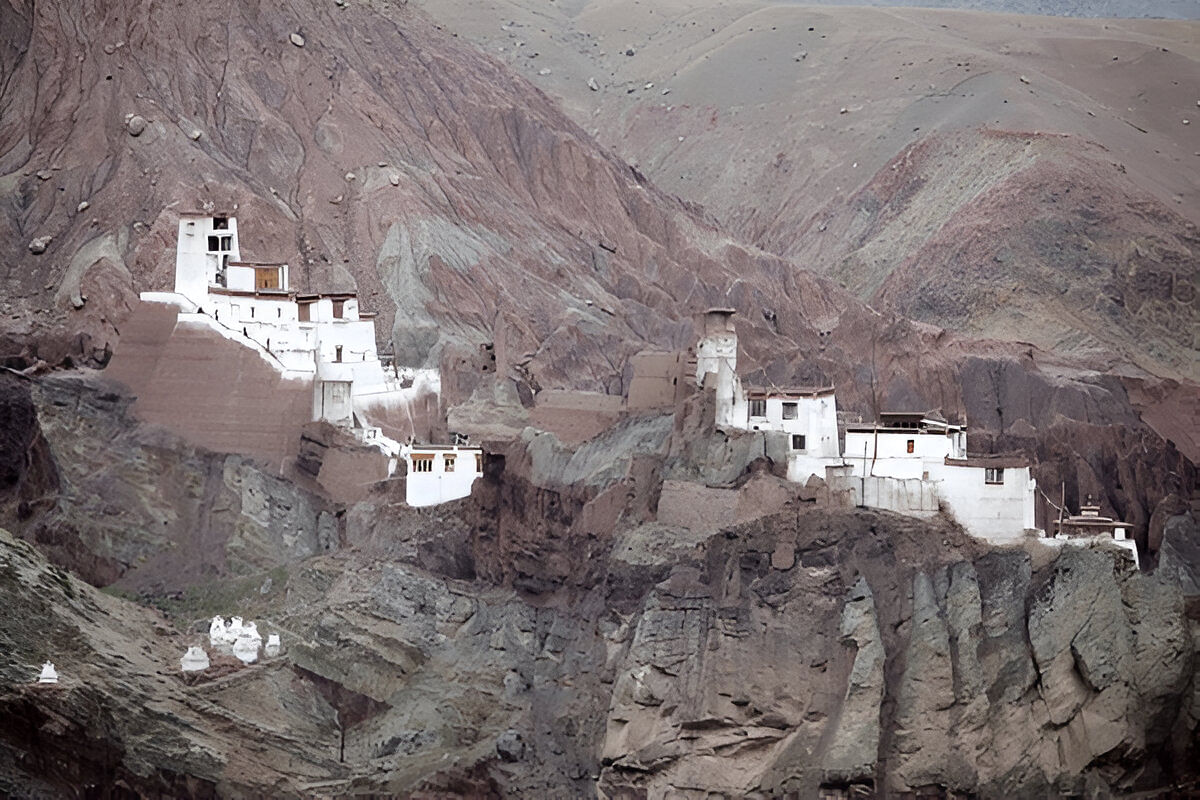
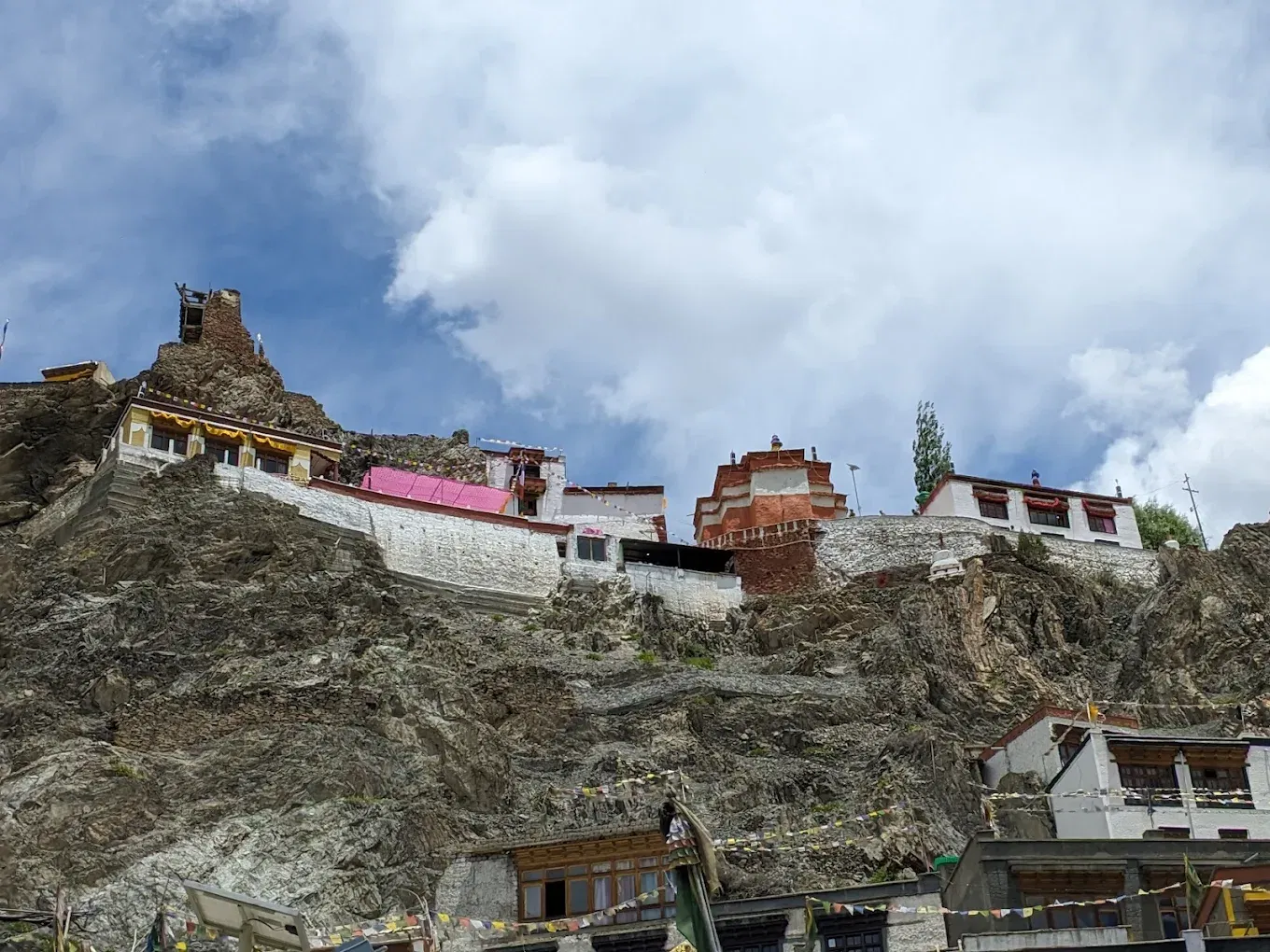
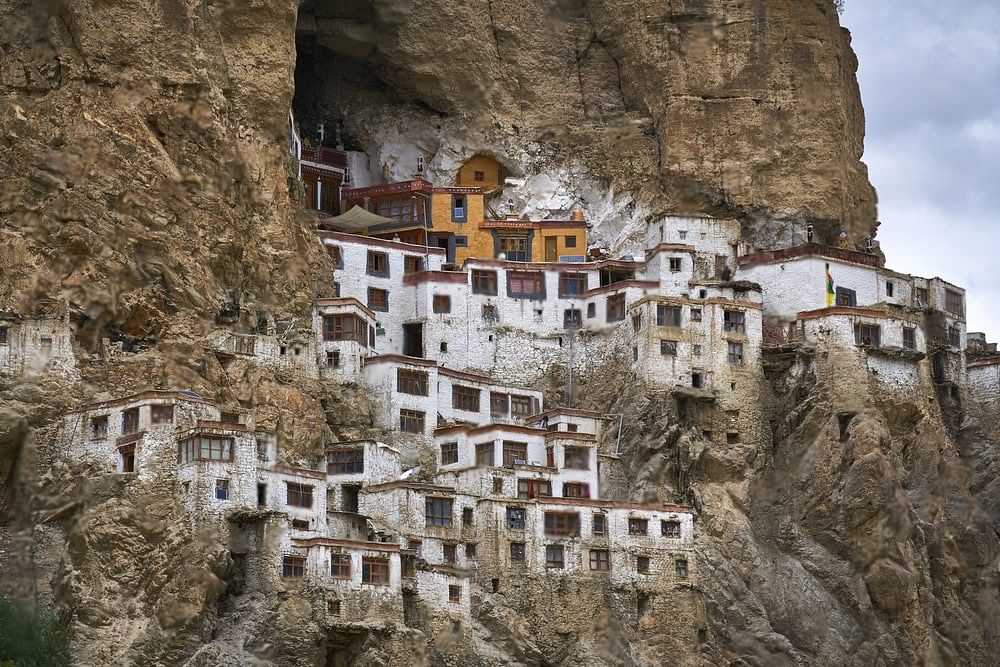
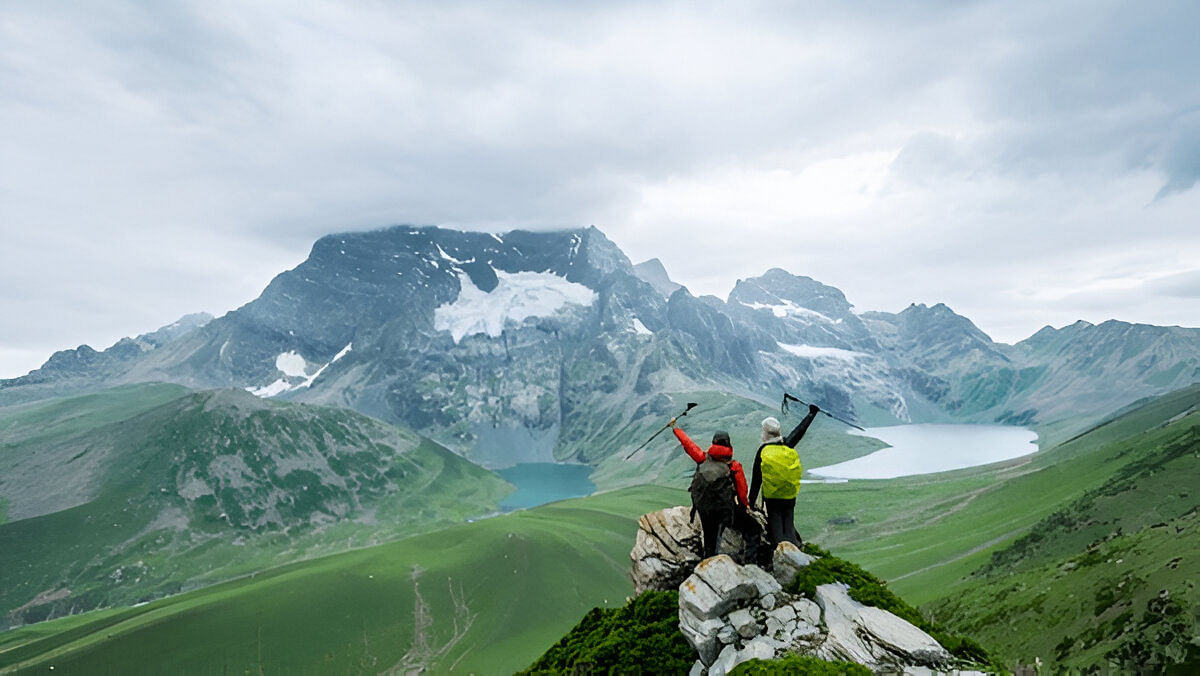
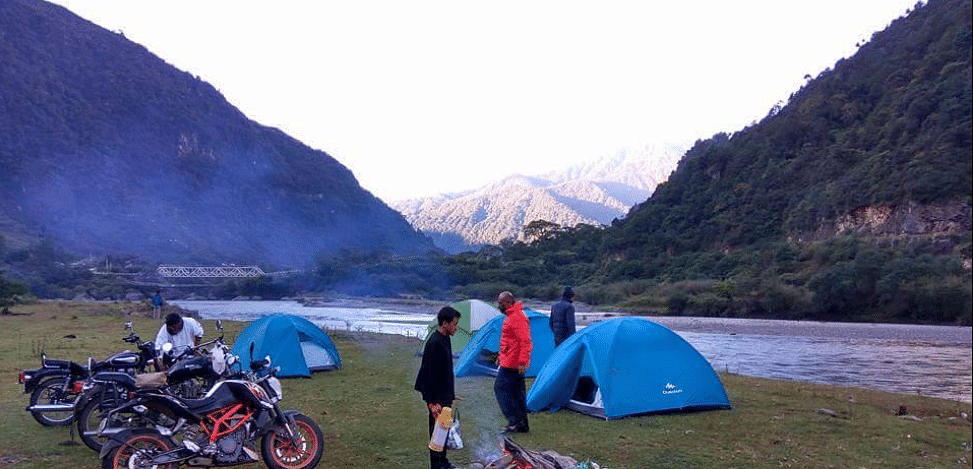
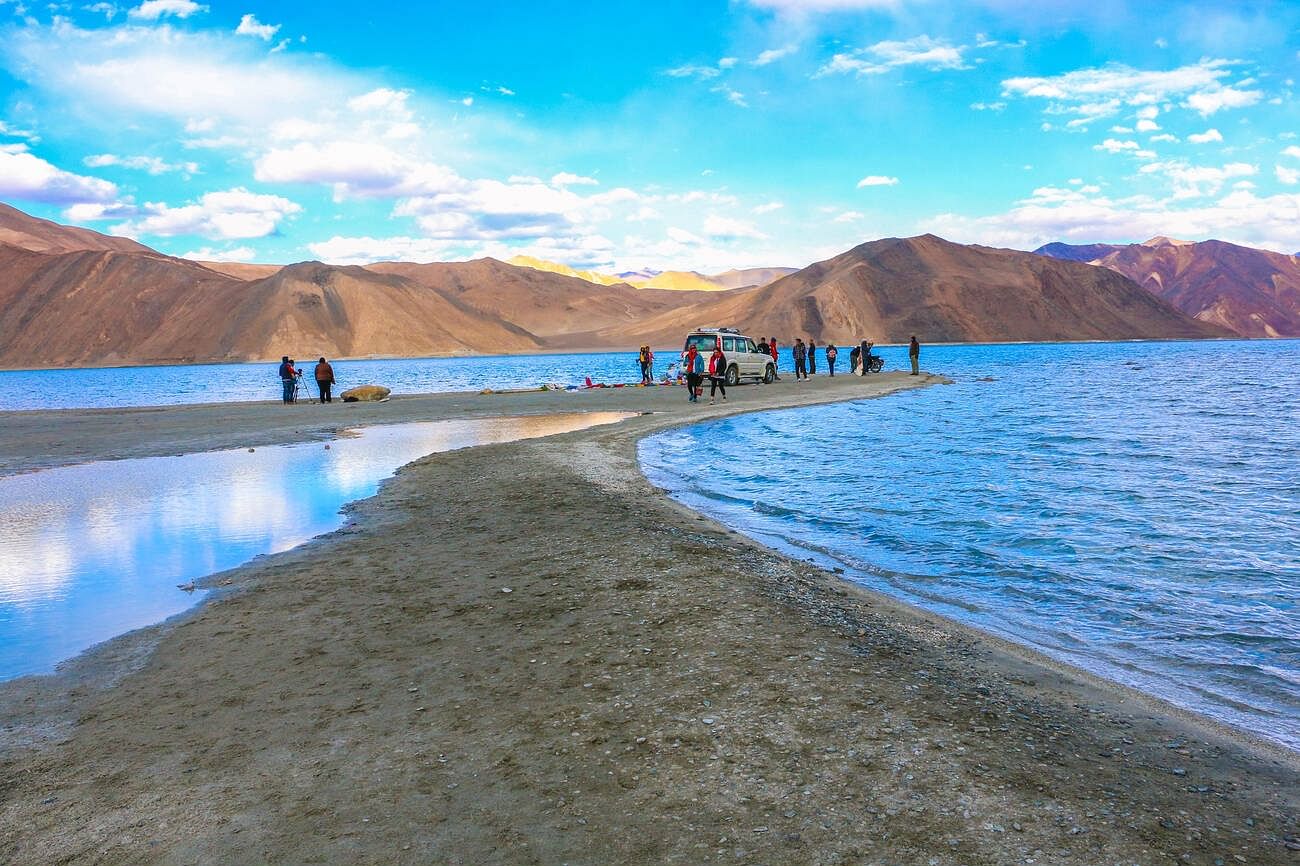
.webp?updatedAt=1744700396004)
.webp?updatedAt=1744700396125)
.webp?updatedAt=1744700396036)
.webp?updatedAt=1744700396120)
.webp?updatedAt=1744700396009)
.webp?updatedAt=1744700396037)
.webp?updatedAt=1744700396035)
.webp?updatedAt=1744700396092)